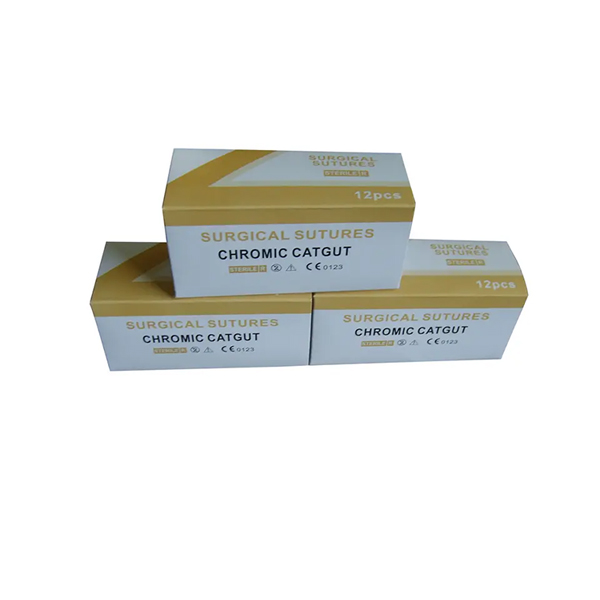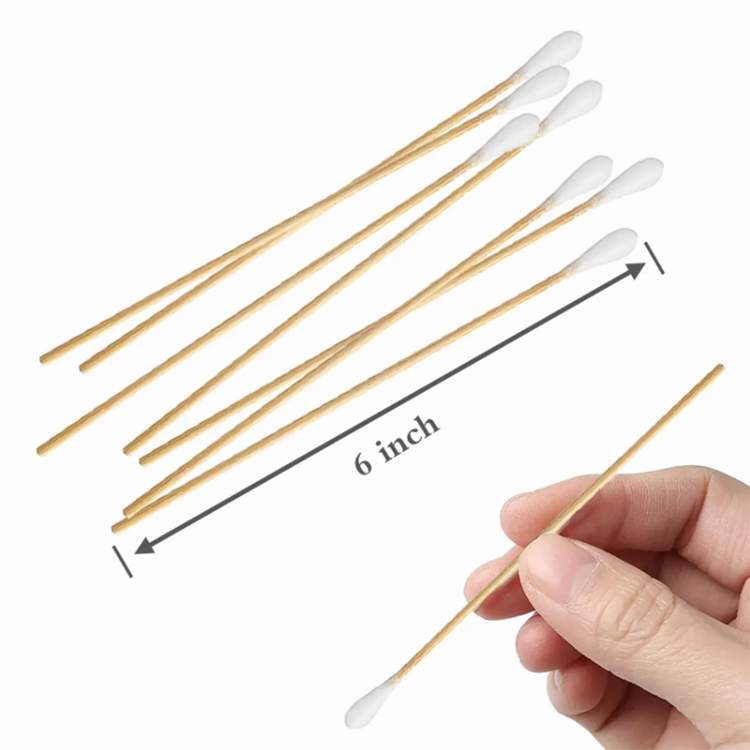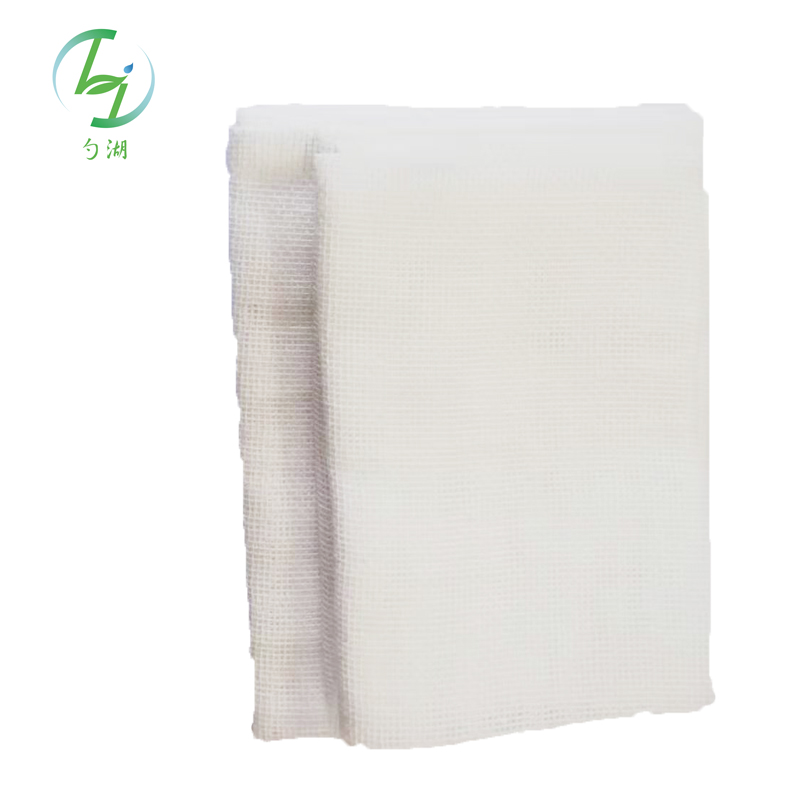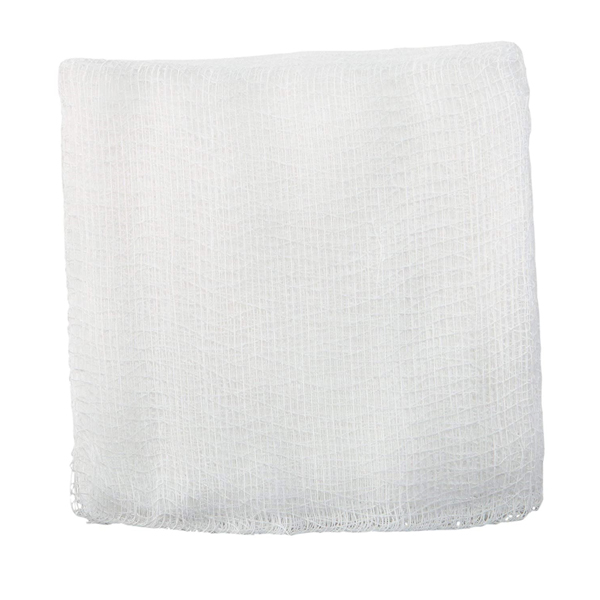Sterile suture with needle
Clinical Significance:
For absorbable sutures, if more strength is required, one can choose a suture with a longer absorption time. Slow healing tissues, like fascia and tendons, should be closed with non-absorbable or slow absorbing sutures, while faster healing tissues like the stomach, colon, and bladder require absorbable sutures. Urinary and biliary tracts are prone to stone formation, so synthetic absorbable sutures are better in this situation, while sutures prone to digestive juices should be those that last longer. Natural sutures do very badly in the GI tract.A non-absorbable suture is best when prolonged tension (fascial closure, tendon repair, bone anchoring, or ligament repair) is necessary for suitable healing
Product Information:
Technique
Grip
The needle holder should be held with the palm grip as illustrated in Figure 1. This allows superior wrist mobility than if the fingers are placed in the handle loops. The needle should be grasped between 1/3 to 1/2 of the distance between the suture attachment and the needle tip.
Knot tying (Square knot)
The long end of the suture is wrapped around the tip of the closed needle holder twice before grasping the short end of the suture with the needle holder. The first double knot is then pulled gently tight. Two (or three) further single throws are then added in a similar fashion to secure the knot. Each throw is pulled in the opposite direction across the wound edge. See Figure 2
Simple interrupted suture
The wound edge should be gently stabilised with either toothed forceps or a skin hook. The needle should enter perpendicular to the skin 3-5mm from the wound edge. See Figure 3. Entering perpendicular causes a wider bite of deeper tissue to be included in the suture than at the surface and consequently causes more wound edge eversion and ultimately a superior cosmetic result with a thinner scar. A common mistake is to enter the skin at a flatter angle resulting in much less wound edge eversion as shown in Figure 4. The knot is then tied as seen in Figure 2.
Specification
1. sterile surgical needle with thread
2. thread length: 45cm, 75cm, 100cm, 125cm, 150cm
3. needle length: 18mm, 22mm, 30mm, 35mm, 40mm, 50mm
4. needle shape(common): 1/2 circle, 1/4 circle, 3/8 circle, 5/8 circle, straight
Product Series:
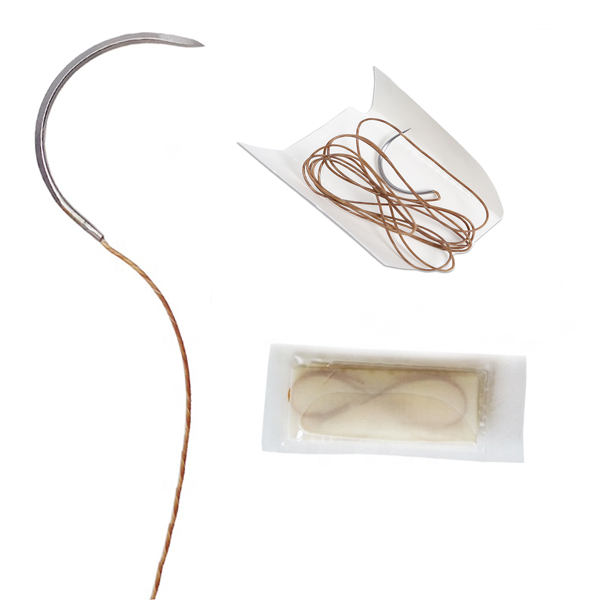
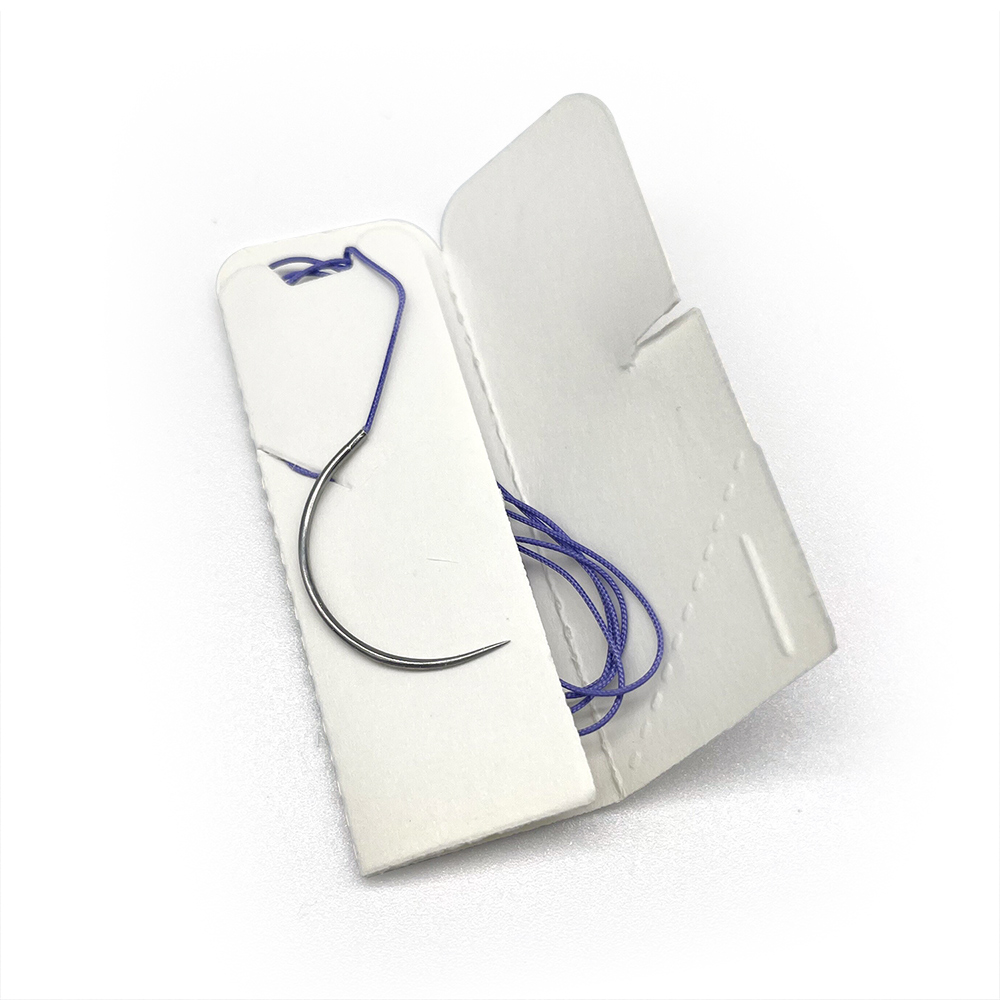
Suture material
The two biggest considerations when choosing a suture are the location and tension of the wound. Other important considerations are tensile strength, knot strength, handling, and tissue reactivity. Sutures are divided into two major groups:
Absorbable - lose the majority of their tensile strength in less than 60 days. They are generally used for buried sutures and do not require removal.
Non-absorbable - maintain the majority of their tensile strength for more than 60 days. They are generally used for skin surface sutures and do require removal postoperatively.
Suture needles also come in a variety of shapes and sizes. Curved needles are almost exclusively used in dermatological surgery. Cutting needles move through the tissue more easily and may have their primary cutting edge on the inside of the curve (conventional cutting) or outside of the curve (reverse cutting). The benefit of reverse cutting is that the tapered puncture left by the suture is directed away from the wound edge and therefore tissue tearing is less common. Non-cutting round needles cause even less tissue tearing and may be especially useful in delicate areas and fascia.
Catgut:
It is made from healthy animal goat intestines and contains collagen, so there is no need to remove the suture after suture. Medical catgut is divided into: ordinary catgut and chrome catgut, both of which can be absorbed. The length of time required for absorption depends on the thickness of the gut and the condition of the tissue. Generally, it can be absorbed in 6 to 20 days, but individual differences in patients affect the absorption process, and even no absorption. The intestines are all single-use sterile packaging, which is easy to use.
Chemical synthesis line (PGA, PGLA, PLA)
A polymer linear material made with current chemical technology, made by thread drawing, coating and other processes, generally absorbed within 60-90 days, and the absorption is stable. If it is due to the production process, there are other non-degradable chemical components, the absorption is incomplete.
Non-absorbable thread
That is, the suture cannot be absorbed by the tissue, so the suture needs to be removed after the suture. The specific stitch removal time varies depending on the suture location, the wound, and the patient's condition.







